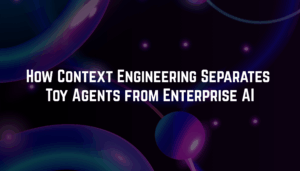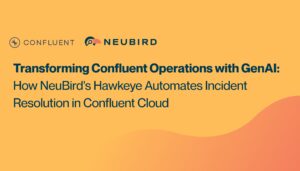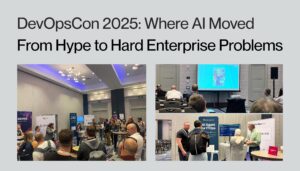Beyond Manual Investigation: How Hawkeye Transforms KubeVirt VM Performance Analysis
How SRE teams are revolutionizing virtualization operations with GenAI
It’s 2 AM, and your phone lights up with another alert: “Critical: Database VM Performance Degradation.” As you dive into your KubeVirt dashboard, you’re faced with a wall of metrics – CPU throttling, IO wait times, memory pressure, and storage latency all competing for your attention. Which metric matters most? What’s the root cause? And most importantly, how quickly can you restore service before it impacts your business?
For SRE teams managing virtualized workloads on Kubernetes, this scenario is all too familiar. KubeVirt has revolutionized how we run virtual machines on Kubernetes, but it’s also introduced new layers of complexity in performance monitoring and troubleshooting. When a VM starts degrading, engineers must correlate data across multiple layers: the VM itself, the KubeVirt control plane, the underlying Kubernetes infrastructure, and the physical hardware – all while under pressure to resolve the issue quickly.
The Reality of KubeVirt Performance Investigation
Traditional approaches to VM performance troubleshooting often fall short in Kubernetes environments. Consider a recent incident at a major financial services company: Their production database VM suddenly showed signs of performance degradation. The traditional investigation process looked something like this:
- Check VM metrics in KubeVirt dashboard
- Review node resource utilization
- Analyze storage metrics
- Investigate guest OS metrics
- Check impact on dependent services
- Correlate timestamps across different metric sources
- Draw conclusions from fragmented data
This manual process typically takes hours, requires multiple context switches between tools, and often misses crucial correlations that could lead to faster resolution. Meanwhile, dependent services degrade, and business impact compounds by the minute.
The Hidden Costs of Manual Investigation
The true cost of traditional VM performance troubleshooting extends far beyond just the immediate incident:
- Engineering Time: Senior engineers spend hours manually correlating data across different layers of the stack
- Business Impact: Extended resolution times mean longer service degradation
- Team Burnout: Complex investigations at odd hours contribute to SRE team fatigue
- Missed Patterns: Without systematic analysis, recurring patterns often go unnoticed
- Knowledge Gap: Detailed investigation steps often remain undocumented, making knowledge transfer difficult
Enter Hawkeye: Your AI-Powered VM Performance Expert
Hawkeye transforms this investigation process through its unique ability to simultaneously analyze and correlate data across your entire stack. Let’s look at how Hawkeye handled the same database VM performance incident:
Within minutes of the initial alert, Hawkeye had:
- Identified CPU throttling at 98% of allocated limits
- Correlated high IO wait times (45ms) with storage IOPS throttling
- Detected memory pressure despite adequate allocation
- Quantified the impact on dependent services (35% increased latency)
- Generated a comprehensive analysis with actionable recommendations
But Hawkeye’s value goes beyond just speed. Its ability to understand the complex relationships between different layers of your infrastructure means it can identify root causes that might be missed in manual investigation. In this case, Hawkeye correlated the VM’s performance degradation with recent storage class QoS limits and memory balloon device behavior – connections that might take hours to discover manually.
Read more: Hawkeye’s intelligence isn’t limited to Kubernetes environments. The same AI capabilities transform VDI monitoring and performance optimization for desktop virtualization teams, applying similar correlation techniques to ControlUp data.
The Transformed Workflow
With Hawkeye as part of your team, the investigation workflow changes dramatically:
- Instant Context: Instead of jumping between dashboards, engineers start with a complete picture of the incident
- Automated Correlation: Hawkeye automatically connects metrics across VM, host, storage, and service mesh layers
- Clear Action Items: Each analysis includes specific, prioritized recommendations for resolution
- Continuous Learning: Hawkeye builds a knowledge base of your environment, improving its analysis over time
Moving from Reactive to Proactive
The real power of Hawkeye lies in its ability to help teams shift from reactive troubleshooting to proactive optimization. By continuously analyzing your environment, Hawkeye can:
- Identify potential resource constraints before they cause incidents
- Recommend optimal VM resource allocations based on actual usage patterns
- Alert on subtle performance degradation patterns before they become critical
- Provide trend analysis to support capacity planning decisions
Read more: Just as Hawkeye transforms VM performance analysis, it can revolutionize your entire monitoring stack. Discover how AI enhances Prometheus & Grafana dashboards for comprehensive Kubernetes monitoring.
Getting Started with Hawkeye
Transforming your KubeVirt operations with Hawkeye is straightforward:
- Connect your telemetry sources:
- KubeVirt metrics
- Kubernetes cluster metrics
- Storage performance data
- Service mesh telemetry
- Configure your preferred incident management integration
- Start receiving AI-powered insights immediately
The Future of VM Operations
As virtualization continues to evolve with technologies like KubeVirt, the old ways of monitoring and troubleshooting no longer suffice. Hawkeye represents a fundamental shift from manual correlation to AI-driven analysis, transforming how SRE teams manage virtual infrastructure and enabling them to focus on strategic improvements rather than reactive firefighting.
Ready to transform your KubeVirt operations? Contact us to see how Hawkeye can become your team’s AI-powered SRE teammate and help your organization tackle the complexity of modern virtualization environments.
Follow
Hawkeye ![]()
Written by







